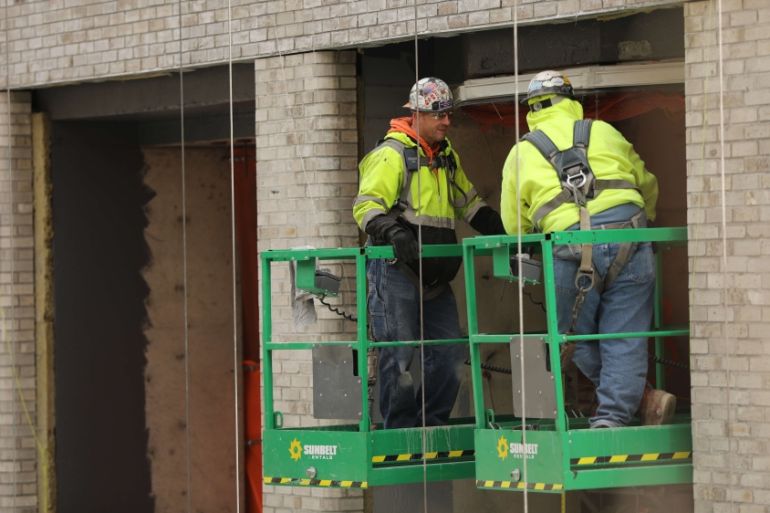US job creation slowed sharply in May. What will the Fed do?
The US economy added only 75,000 jobs in May, raising expectations that the Fed will cut interest rates this year.

As misses go, the latest reading on the United States jobs market missed expectations by a mile.
The US economy added a paltry 75,000 jobs in May, the US Department of Labor reported Friday. That reading is wide of the 185,000 jobs that economists polled by Reuters were expecting, and well short of the roughly 100,000 jobs needed to absorb new entrants into the US labour force.
Keep reading
list of 4 itemsWhy are nations racing to buy weapons?
Parallel economy: How Russia is defying the West’s boycott
US House approves aid package worth billions for Ukraine, Israel
The big miss could increase calls for the US central bank, the Federal Reserve, to cut interest rates for the first time in over a decade. Lowering borrowing costs boosts economic growth by encouraging consumers to buy more and spurring businesses to expand production.
US unemployment continued to hover near a 50-year low last month, remaining unchanged at 3.6 percent, while annual wage growth in May increased 3.1 percent.
The labour department also reported that employment gains for March and April combined were 75,000 less than previously reported.
Resilient, but for how long?
Friday’s weak jobs report should be read with a grain of salt. One month’s data does not make a trend, and the US economy has so far been resilient to the fallout from trade fights between the US and China.
But economists and business leaders have warned that escalating trade tensions threaten to undermine the economy, which is set to mark a record decade of expansion next month.
In early May, US President Donald Trump dramatically hiked tariffs on $200bn of Chinese goods from 10 percent to 25 percent. Beijing responded by imposing tariffs on $60bn of US goods.
Then last week, Trump opened up a new trade war front against another major US trading partner – Mexico – warning that he will impose five-percent tariffs on all Mexican goods on Monday unless more is done to stem the flow of undocumented migrants seeking to enter the US via Mexico.
Manufacturing employment rose by only 3,000 new jobs in May, signaling softness in the sector tied to trade tensions and slowing global economic growth.
Earlier this week, a key metric of US manufacturing activity showed that while manufacturing continues to expand in general, it did so last month at the slowest pace in over two years.
“The lack of meaningful jobs growth in manufacturing, and lower-than-average wage growth in manufacturing, gives another indication that Trump’s trade war is hurting workers and the economy,” Seth Harris, a distinguished scholar at Cornell University’s School of Industrial and Labor Relations and former acting Secretary of Labor under former President Barack Obama, told Al Jazeera.
Harris also noted that “BLS [Bureau of Labor Statistics] conducted its survey before Trump started hurling threats at Mexico.”
What will the Fed Do?
Tuesday, US Federal Reserve Chairman Jerome Powell indicated that fed policymakers are prepared to lower borrowing costs if the trade war becomes a major headwind to the US economy.
Friday’s disappointing read on the US jobs market is further fueling expectations that the Fed will likely cut interest rates this year in order to stimulate a US economic recovery that is getting rather long in the tooth.
“On balance, we still think Fed officials will want to see evidence of more sustained weakness before taking action, but we are increasingly convinced that the Fed will begin cutting interest rates later this year,” Andrew Hunter, senior US economist for Capital Economics, wrote in a note to clients on Friday.
But others believe there is no justification for the Fed to cut interest rates, given that unemployment is at a record low and inflation remains subdued.
“Even with these concerns, there would be no basis for the Federal Reserve to cut rates when it meets later this month,” said Harris. “The only reason to cut rates would be to preemptively try to cauterize the damage Trump is doing to the economy with his irresponsible tariff threats, and that’s not an appropriate basis for Fed decision-making, at least at this stage.”